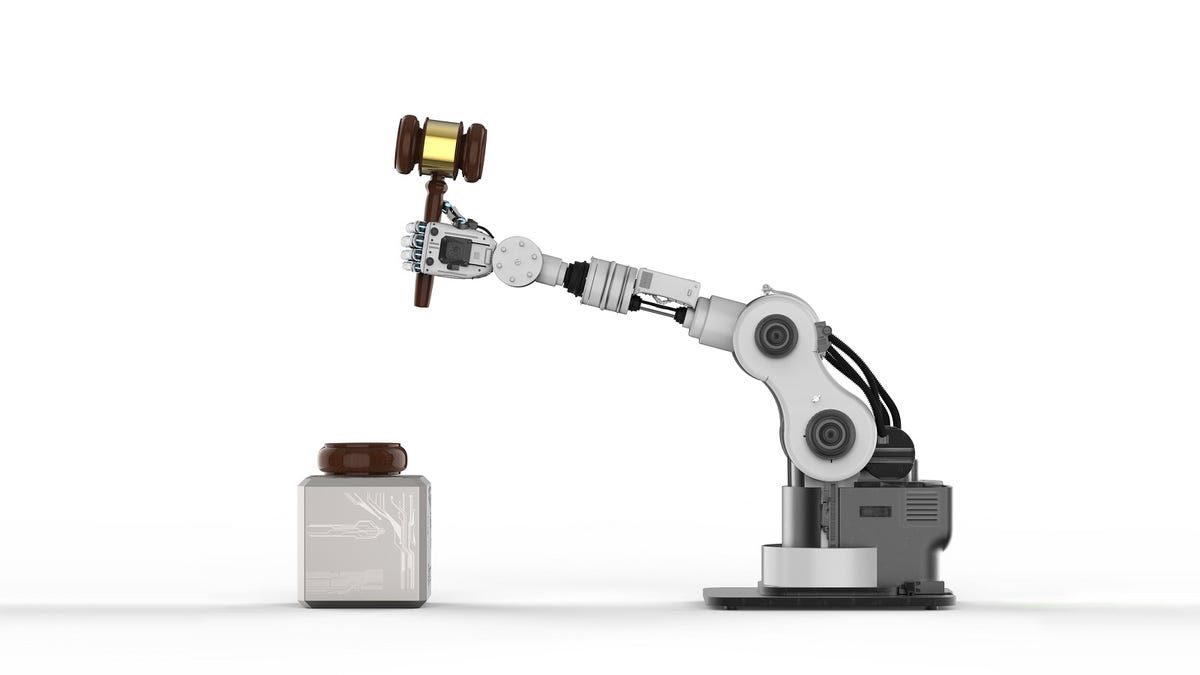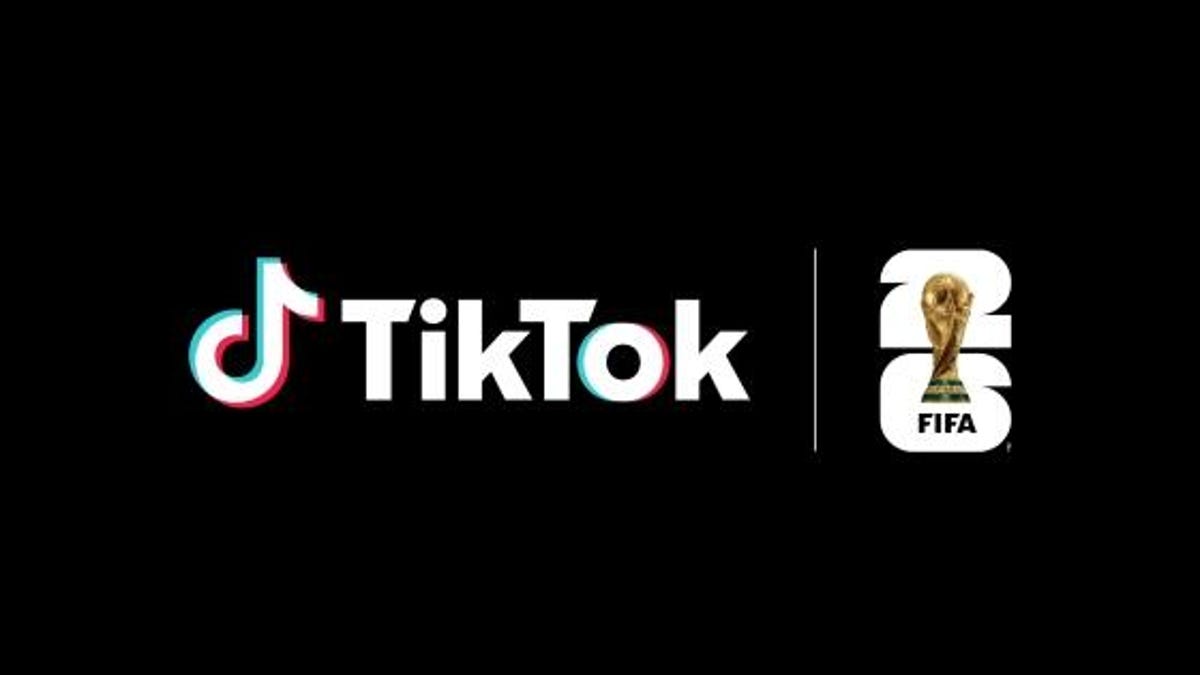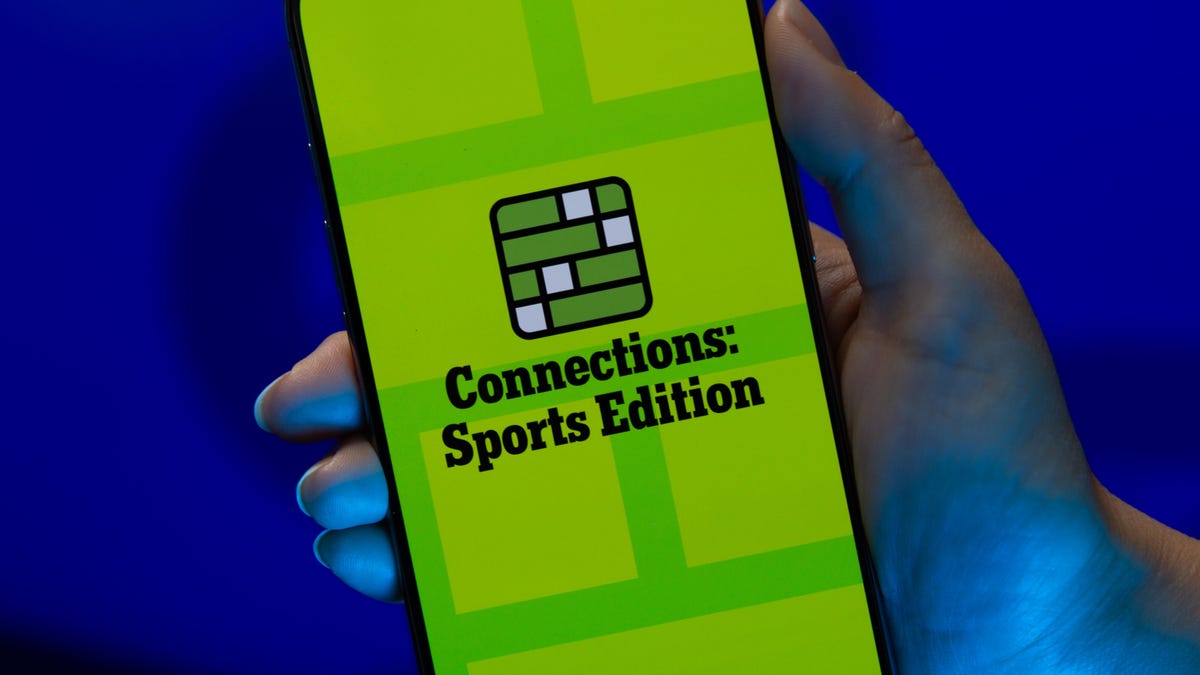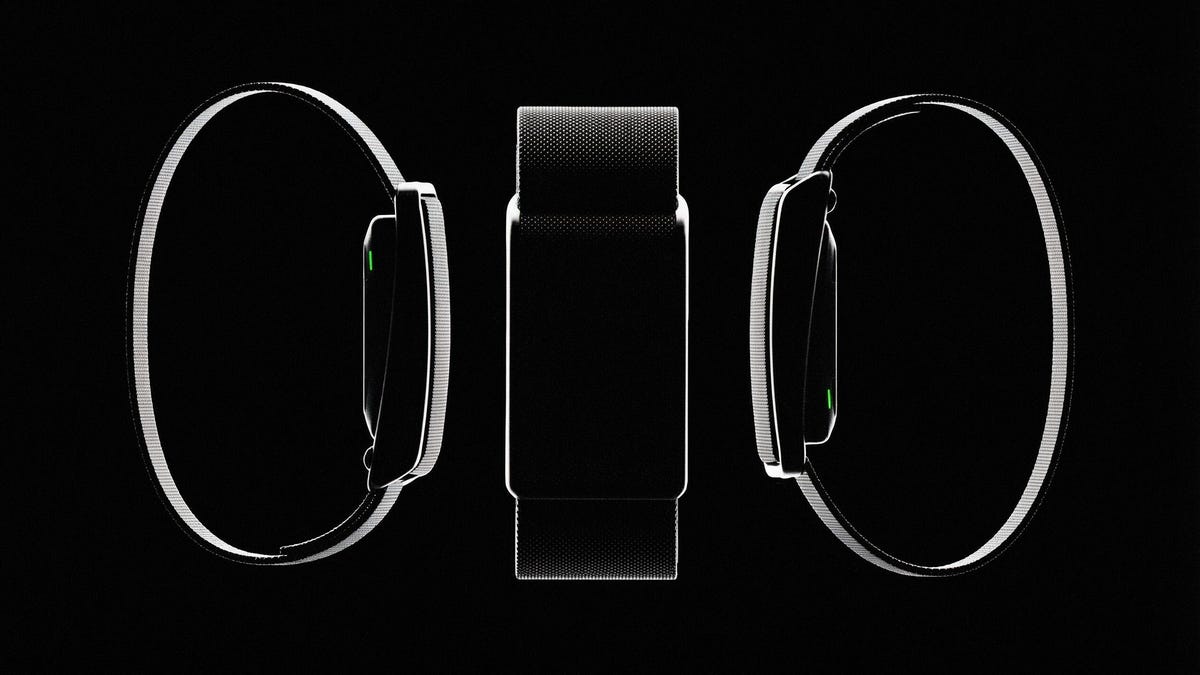Technologies
AI as Lawyer: It’s Starting as a Stunt, but There’s a Real Need
People already have a hard enough time getting help from lawyers. Advocates say AI could change that.

Next month, AI will enter the courtroom, and the US legal system may never be the same.
An artificial intelligence chatbot, technology programmed to respond to questions and hold a conversation, is expected to advise two individuals fighting speeding tickets in courtrooms in undisclosed cities. The two will wear a wireless headphone, which will relay what the judge says to the chatbot being run by DoNotPay, a company that typically helps people fight traffic tickets through the mail. The headphone will then play the chatbot’s suggested responses to the judge’s questions, which the individuals can then choose to repeat in court.
It’s a stunt. But it also has the potential to change how people interact with the law, and to bring many more changes over time. DoNotPay CEO Josh Browder says expensive legal fees have historically kept people from hiring traditional lawyers to fight for them in traffic court, which typically involves fines that can reach into the hundreds of dollars.
So, his team wondered whether an AI chatbot, trained to understand and argue the law, could intervene.
«Most people can’t afford legal representation,» Browder said in an interview. Using the AI in a real court situation «will be a proof of concept for courts to allow technology in the courtroom.»
Regardless of whether Browder is successful — he says he will be — his company’s actions mark the first of what are likely to be many more efforts to bring AI further into our daily lives.
Modern life is already filled with the technology. Some people wake up to a song chosen by AI-powered alarms. Their news feed is often curated by a computer program, too, one that’s taught to pick items they’ll find most interesting or that they’ll be most likely to comment on and share via social media. AI chooses what photos to show us on our phones, it asks us if it should add a meeting to our calendars based on emails we receive, and it reminds us to text a birthday greeting to our loved ones.
But advocates say AI’s ability to sort information, spot patterns and quickly pull up data means that in a short time, it could become a «copilot» for our daily lives. Already, coders on Microsoft-owned GitHub are using AI to help them create apps and solve technical problems. Social media managers are relying on AI to help determine the best time to post a new item. Even we here at CNET are experimenting with whether AI can help write explainer-type stories about the ever-changing world of finance.
So, it can seem like only a matter of time before AI finds its way into research-heavy industries like the law as well. And considering that 80% of low-income Americans don’t have access to legal help, while 40% to 60% of the middle class still struggle to get such assistance, there’s clearly demand. AI could help meet that need, but lawyers shouldn’t feel like new technology is going to take business away from them, says Andrew Perlman, dean of the law school at Suffolk University. It’s simply a matter of scale.
«There is no way that the legal profession is going to be able to deliver all of the legal services that people need,» Perlman said.
Turning to AI
DoNotPay began its latest AI experiment back in 2021 when businesses were given early access to GPT-3, the same AI tool used by the startup OpenAI to create ChatGPT, which went viral for its ability to answer questions, write essays and even create new computer programs. In December, Browder pitched his idea via a tweet: have someone wear an Apple AirPod into traffic court so that the AI could hear what’s happening through the microphone and feed responses through the earbud.
Aside from people jeering him for the stunt, Browder knew he’d have other challenges. Many states and districts limit legal advisors to those who are licensed to practice law, a clear hurdle that UC Irvine School of Law professor Emily Taylor Poppe said may cause trouble for DoNotPay’s AI.
«Because the AI would be providing information in real time, and because it would involve applying relevant law to specific facts, it is hard to see how it could avoid being seen as the provision of legal advice,» Poppe said. Essentially, the AI would be legally considered a lawyer acting without a law license.
AI tools raise privacy concerns too. The computer program technically needs to record audio to interpret what it hears, a move that’s not allowed in many courts. Lawyers are also expected to follow ethics rules that forbid them from sharing confidential information about clients. Can a chatbot, designed to share information, follow the same protocols?
Perlman says many of these concerns can be answered if these tools are created with care. If successful, he argues, these technologies could also help with the mountains of paperwork lawyers encounter on a daily basis.
Ultimately, he argues, chatbots may turn out to be as helpful as Google and other research tools are today, saving lawyers from having to physically wade through law libraries to find information stored on bookshelves.
«Lawyers trying to deliver legal services without technology are going to be inadequate and insufficient to meeting the public’s legalities,» Perlman said. Ultimately, he believes, AI can do more good than harm.
The two cases DoNotPay participates in will likely impact much of that conversation. Browder declined to say where the proceedings will take place, citing safety concerns.
Neither DoNotPay nor the defendants plan to inform the judges or anyone in court that an AI is being used or that audio is being recorded, a fact that raises ethics concerns. This in itself resulted in pushback on Twitter when Browder asked for traffic ticket volunteers in December. But Browder says the courts that DoNotPay chose are likely to be more lenient if they find out.
The future of law
After these traffic ticket fights, DoNotPay plans to create a video presentation designed to advocate in favor of the technology, ultimately with the goal of changing law and policy to allow AI in courtrooms.
States and legal organizations, meanwhile, are already debating these questions. In 2020, a California task force dedicated to exploring ways to expand access to legal services recommended allowing select unlicensed practitioners to represent clients, among other reforms. The American Bar Association told judges using AI tools to be mindful of biases instilled in the tools themselves. UNESCO, the international organization dedicated to preserving culture, has a free online course covering the basics of what AI can offer legal systems.
For his part, Browder says AI chatbots will become so popular in the next couple of years that the courts will have no choice but to allow them anyway. Perhaps AI tools will have a seat at the table, rather than having to whisper in our ears.
«Six months ago, you couldn’t even imagine that an AI could respond in these detailed ways,» Browder said. «No one has imagined, in any law, what this could be like in real life.»
Technologies
TikTok and FIFA Team Up for World Cup 2026 Coverage
A new team-up aims to make this summer’s tournament more accessible for fans.

If you hadn’t already planned on swiping on TikTok videos of the 2026 FIFA World Cup, a new partnership between the social media platform and tournament organizer FIFA could motivate you to start stretching out your thumbs.
As the soccer tournament nears — it will take place from June 11 to July 19 and span 16 host cities in Canada, Mexico and the US — TikTok will become FIFA’s first «preferred platform.» According to a FIFA statement on Thursday, this entails TikTok providing more coverage of the World Cup, including original content and even livestreaming of some portions of matches.
Don’t miss any of our unbiased tech content and lab-based reviews. Add CNET as a preferred Google source.
You can use the FIFA World Cup 2026 hub on TikTok to find content, match tickets and viewing information, as well as participation incentives such as custom stickers and filters.
In the US, World Cup games will air live across Fox and FS1. If you don’t have cable, you can get a live TV streaming service, such as YouTube TV, which includes those channels. Additionally, every match will stream live on Fox One and the Fox Sports app.
«FIFA’s goal is to share the exhilaration of the FIFA World Cup 2026 with as many fans as possible,» FIFA Secretary General Mattias Grafström said.
Technologies
Today’s NYT Connections: Sports Edition Hints and Answers for Jan. 9, #473
Here are hints and the answers for the NYT Connections: Sports Edition puzzle for Jan. 9, No. 473.

Looking for the most recent regular Connections answers? Click here for today’s Connections hints, as well as our daily answers and hints for The New York Times Mini Crossword, Wordle and Strands puzzles.
Today’s Connections: Sports Edition might be tough, if you don’t know your sports venues. If you’re struggling with today’s puzzle but still want to solve it, read on for hints and the answers.
Connections: Sports Edition is published by The Athletic, the subscription-based sports journalism site owned by The Times. It doesn’t appear in the NYT Games app, but it does in The Athletic’s own app. Or you can play it for free online.
Read more: NYT Connections: Sports Edition Puzzle Comes Out of Beta
Hints for today’s Connections: Sports Edition groups
Here are four hints for the groupings in today’s Connections: Sports Edition puzzle, ranked from the easiest yellow group to the tough (and sometimes bizarre) purple group.
Yellow group hint: Are you ready for some playoffs?
Green group hint: Up! Down!
Blue group hint: Where teams play.
Purple group hint: Not angels.
Answers for today’s Connections: Sports Edition groups
Yellow group: NFL playoff rounds.
Green group: Jumping ability.
Blue group: NBA arenas.
Purple group: ____ devils.
Read more: Wordle Cheat Sheet: Here Are the Most Popular Letters Used in English Words
What are today’s Connections: Sports Edition answers?
The yellow words in today’s Connections
The theme is NFL playoff rounds. The four answers are conference championship, divisional, Super Bowl and wild card.
The green words in today’s Connections
The theme is jumping ability. The four answers are bounce, bunnies, hops and ups.
The blue words in today’s Connections
The theme is NBA arenas. The four answers are Delta, FedEx, Scotiabank and Spectrum.
The purple words in today’s Connections
The theme is ____ devils. The four answers are blue, New Jersey, red and sun.
Don’t miss any of our unbiased tech content and lab-based reviews. Add CNET as a preferred Google source.
Technologies
Speediance’s Compact Resistance Trainer and Wearable Make Wellness and Fitness More Connected
Speediance unveils a portable strength training device and a wearable at CES.

Speediance unveiled its new Gym Nano and Speediance Strap products this week at CES 2026. The smart fitness equipment manufacturer, which previously developed its own smart home gym, the Gym Monster 2, designed the Gym Nano and Speediance Strap to complement its current equipment ecosystem.
«Rather than developing products in isolation, we’re building a comprehensive training and health ecosystem that adapts to users’ real lives and empowers better decision-making over time,» Speediance founder and CEO Liu Tao said in a statement.
Speediance used the consumer tech expo in Las Vegas to demonstrate the Gym Nano, a portable, motor-driven cable resistance training system designed to occupy minimal space for those who prefer to work out at home. The strap is a prototype wearable device designed to read your health data and provide training recommendations based on this insight.
CNET previously tested Speediance’s VeloNix AI Smart Bike and named it the best AI-powered exercise bike.
Don’t miss any of our unbiased tech content and lab-based reviews. Add CNET as a preferred Google source.
Gym Nano
The Gym Nano is a compact digital cable resistance machine trainer that fits any space and delivers full-body workouts. It’s meant to make strength training at home easier if you have limited space and can’t commit to larger home gym equipment.
The Gym Nano offers up to 220 pounds of resistance through adjustable 1-pound increments. It also has five dynamic weight modes: Eccentric, Chain, Standard, Fixed Speed and Sled.
Speediance Strap
The Speediance Strap is a screen-free wearable that collects data related to your sleep, training and core body temperature. It then uploads and shares this data to the Speediance Wellness Plus app, where it makes suggestions for your daily training and recovery based on this information.
The strap can be used for both endurance and strength training activities and recognizes various types of exercises, movement patterns, training volume and other insights that can help you learn how well your body is responding to your training.
The Speediance Strap is a screen-free wearable that collects data related to your sleep, training and core body temperature. It then uploads and shares this data to the Speediance Wellness Plus app, where it makes suggestions for your daily training and recovery based on this information. Similar to other wearables, the Speediance Strap assesses your readiness each day and can detect stress factors to determine if you should focus more on recovery on that day.
«With Speediance Strap, we are exploring how wearable data can function as part of a decision-support layer within a connected fitness system, rather than existing as isolated metrics,» Tao said in a statement.
Additionally, everyday insights (like core and recovery data) will be free to you unless you want to upgrade to the Wellness Plus access, which will come at an additional cost to receive long-term insights and AI planning.
It’s unclear when the Gym Nano will be available for purchase, but the Speediance Strap is expected to launch through a Kickstarter campaign in spring 2026.
-

 Technologies3 года ago
Technologies3 года agoTech Companies Need to Be Held Accountable for Security, Experts Say
-

 Technologies3 года ago
Technologies3 года agoBest Handheld Game Console in 2023
-

 Technologies3 года ago
Technologies3 года agoTighten Up Your VR Game With the Best Head Straps for Quest 2
-

 Technologies4 года ago
Technologies4 года agoBlack Friday 2021: The best deals on TVs, headphones, kitchenware, and more
-

 Technologies4 года ago
Technologies4 года agoGoogle to require vaccinations as Silicon Valley rethinks return-to-office policies
-

 Technologies4 года ago
Technologies4 года agoVerum, Wickr and Threema: next generation secured messengers
-

 Technologies4 года ago
Technologies4 года agoOlivia Harlan Dekker for Verum Messenger
-

 Technologies4 года ago
Technologies4 года agoiPhone 13 event: How to watch Apple’s big announcement tomorrow
